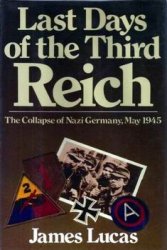Along with persecuting witches, Christian authorities also persecuted Jews. Jewish life
in the early modern period was profoundly shaped by repression, restriction, and in
some cases expulsion at the hands of Christian society, though also by economic and
intellectual innovation. The center of Jewish culture and the majority of the Jewish
population in Europe moved eastward. After Ferdinand and Isabella ordered all Jews to
leave Spain or convert in 1492, many Sephardic Jews – who took their name from Sepharad
, the Hebrew name for Spain – fl ed across the borders to Portugal and Navarre.
Those who converted and their descendants (termed conversos or “New Christians”)
were frequently targets of the Spanish Inquisition, which investigated and prosecuted
converts suspected of secretly engaging in Jewish practices or maintaining Jewish beliefs.
Portugal expelled the Jews in 1496 and Navarre in 1498, but the Portuguese Inquisition
was not as well established as the Spanish, and it was safer to be a converso in
Portugal than in Spain, at least until the Portuguese Inquisition was intensifi ed in 1579
and Portugal united with Spain in 1580.
Many Sephardic Jews migrated further, to cities in the Low Countries that were
more open, or to Italy, where some city rulers invited Jews in to help expand foreign
trade, though placating local Christians by segregating the Jews in walled ghettoes.
Between 1555 and 1779, twenty-three ghettoes were established in northern Italy, pulling
in populations from Spain, the Spanish-ruled territories in Italy, the Papal States
(where Jews were banned in 1569), and elsewhere in Europe. Such bans were not always
enforced, but the sixteenth and seventeenth centuries saw individuals, families, and
whole communities moving from one place to another in a diaspora that involved disruption
and loss of property, but also created personal and familial connections across
broad areas. Jews became important merchants for New World products like tobacco
and sugar, whose trade was usually not restricted by guild rules, and in furs and grain.
In the middle of the seventeenth century, Jewish fi nanciers became important to many
rulers in western and central Europe as military suppliers and bankers. These “court
Jews,” as they were known, such as Samuel Oppenheimer ( 1630–1703) and Joseph Süss
Oppenheimer (1698–1738 – known as “Jew Süss”), were indispensable to the rulers they
served, but also very vulnerable; Samuel was killed by an angry mob in Vienna and
Joseph was executed.
Many Jews went to the eastern Mediterranean, where the Ottoman sultans welcomed
Jewish skills. Within the Ottoman Empire, Jews, like Christians, had their own
millet , with the right to maintain their own laws regarding marriage, morals, and religious
practices. The Jewish community was linguistically and culturally diverse: Greek
Jews spoke Greek, Middle Eastern Jews spoke Arabic, and Sephardic Jews spoke Spanish.
This Spanish later evolved into a distinct language called “Judezmo” or “Ladino,”
written in Hebrew letters and taking in Greek and Turkish words. Jews were a signifi
cant share of the population in Constantinople and an even larger share of that in
Salonika, where they set up the fi rst printing presses in the Ottoman Empire. Jewish
scholars in Salonika produced scientifi c and legal works, commentaries on the cabala
( alternatively spelled kaballah), and a tri-lingual edition of Hebrew Scripture.
Central European Jews – called Ashkenazic from the Hebrew word for the Rhineland
area – also migrated eastward, pushed by persecution and pulled by the more welcoming
policies of the rulers and nobles of Poland- Lithuania. They were hired by nobles to manage
vast estates and the serfs that lived on them, and to populate areas that were thinly
settled, including Lithuania and Ukraine. Like Sephardic Jews in the Ottoman Empire,
Ashkenazic Jews carried their language with them; they spoke a German that gradually
evolved into Yiddish, written in Hebrew letters but sounding quite similar to German.
Ashkenazic immigrants opened religious academies in Lublin, Poznán, and Kraków,
which became centers of scholarship on the Talmud. In 1648, peasant discontent about
oppressive economic conditions combined with Ukrainian Cossack resentment at Polish
rule in a violent rebellion led by the Ukrainian Bohdan Khmelnytsky (1595–1657).
About a quarter of the Jews – perhaps as many as 40,000 people – were killed, the largest
such massacre until the twentieth century, and many more migrated westward, though
Poland continued to have the greatest concentration of Jews in Europe.
Rulers gave Jewish communities autonomy in many aspects of life, and they developed
self-governing institutions from the local to the international level. At the local
level, a legitimate Jewish community required a group of ten adult males for obligatory
prayers ( minyan ), a cemetery, a kosher slaughterer, and a ritual bath ( mikvah ).
Communities elected councils and offi cers, and often hired a rabbi for spiritual leadership,
though rabbis did not play an essential role in rituals. They established civil
and religious courts, systems of taxation, charities for the poor, and burial societies to
provide for funerals and prayer ( hevrahs ). Offi cial positions, public prayers, and formal
schooling were generally limited to men, though there were a few women’s hevrahs
run by the women themselves. Women developed special voluntary prayers in Yiddish
(thkines ) for biological and cultural events particularly important for women, including
menstruation, pregnancy, childbirth, baking bread, or visiting cemeteries, which
transformed folk rituals not mentioned in Jewish law, such as making candles for Yom
Kippur, into true religious duties.
Local communities sometimes sent representatives to regional councils or rabbinic
synods, and in 1581 the Polish crown established the Council of the Four Lands, a parliamentary
body of rabbis and lay offi cials that met annually or biannually to set general
policies for Jews in all the territory it ruled. This lasted until it was dissolved by
the Polish parliament in 1764, and shortly afterwards Jewish life, like everything else
in Poland, came under Prussian, Russian, and Austrian rule when Poland disappeared
with the partitions.
Jewish life centered on the observance of Jewish law ( halakhah ), which was fundamentally
based on Mosaic law and also on the Talmud, a large work of legal commentary
and rabbinic interpretation compiled in the sixth century ce in Babylonia.
Talmudic principles were further expanded, interpreted, and adapted to specifi c circumstances
in responsa literature, which were answers from leading scholars to questions
from local rabbis or communities about the proper application of legal principles.
The disruptions, migrations, and resettlements of the early modern period provided
plenty of issues to be discussed, and some Jewish legal authorities sought to codify the
increasingly large body of Jewish law in a way that would provide more helpful practical
guidance. (This was at exactly the same time as Christian jurists and legal scholars
in western Europe were advocating the adoption of the more organized Roman law
instead of a jumble of local law codes.) First Sephardic and then Ashkenazic rabbis
systematized legal commentary, though they also tried to retain fl exibility in its application
to specifi c local situations.
Along with halakhah , many rabbis and ordinary Jews increasingly celebrated the
cabala, Jewish mystical texts that originated in the twelfth and thirteenth centuries
in Spain and southern France, but looked back to much older traditions. Cabalistic
writings and practices spread throughout the Mediterranean and into Europe with
the diaspora of Spanish Jews, and were among the earliest printed works in Hebrew.
The cabala offers mystical understandings of the nature of God, the origins of evil, the
meaning of religious texts and ceremonies, the parts of the human soul, and a range
of other topics. In the sixteenth and seventeenth centuries, cabalists such as Isaac Luria
(1534–72 ) developed systems of spiritual practices, mystical ceremonies, and guides to
behavior based on the cabala. Groups studying and practicing cabala were organized
in many Jewish communities devoted to intense prayer, moral behavior, interior individual
piety, and the study of sacred texts; they were thus very similar to pietist groups
that were emerging at the same time within Christianity.
Jewish scholars and ordinary people sometimes interpreted the events, upheavals,
and persecutions of the early modern period as signs that the redemption of the Jews
and the coming of a Messiah (from the Hebrew for “anointed”) as prophesied in biblical
texts was near. Charismatic individuals emerged as messianic leaders, of whom the
most important was Shabbetai Tzevi (1626–76 ), a rabbi born in Smyrna in southern
Turkey. Tzevi studied Jewish law and mysticism, and came to believe that he was the
Messiah foretold in Scripture. He traveled around the Ottoman Empire gaining adherents,
and rumors of his miracles and his message spread throughout Europe among
both Jews and Christians, feeding on apocalyptic predictions centering on the year
1666. He publicly declared he was the Messiah in 1665, and masses of people fl ocked to
the area near Istanbul where he was living, while others waited for his signal to journey
to the Holy Land. Leaders from Jewish communities all over Europe took him very
seriously, offering prayers for him and sending him money.
The sultan grew increasingly worried about what could happen and imprisoned
Tzevi; in 1666 Tzevi agreed to convert to Islam instead of being executed. This split
his followers; some argued that this was all part of his plan and converted to Islam as
well, while others denounced him. Even after he died, his followers kept the Shabbetai
movement alive with predictions that he would return, worshipping as a secret group
that seems to have blended Jewish and Muslim teachings. In the eighteenth century,
a Polish merchant named Jacob Frank (1726–91) claimed to be the reincarnation of
Shabbetai Tzevi, and acquired hundreds of followers, adding Christian teachings to the
Shabbetai blend. He was eventually baptized as a Christian and gained the favor of Maria
Theresa, who thought he could spread Christianity among Jews. The Frankist sect
disappeared quickly and had little long-term impact, though the Shabbetai movement
itself split Jewish communities in both Ottoman and Christian Europe for centuries.
In the eighteenth century, Judaism developed in different directions. Haskalah
( from the Hebrew word for intellect or enlightenment), an intellectual and religious
movement centered on Germany and Poland, advocated the critical study of religious
texts and history, expanded secular education, and more integration into non-Jewish
society. This modernization of traditional Jewish beliefs and practices led to both more
assimilation and more intense interest in Jewish identity; the latter gradually grew into
Zionism, the Jewish nationalist movement, and greatly infl uenced the founders of the
state of Israel. At roughly the same time in Ukraine, Rabbi Israel ben Eliezer (1700–60),
also known as the Baal Shem Tov or Besht, developed a more emotional form of piety
that centered on prayer, singing, movement, and joyful worship as well as mysticism to
achieve communion with God. His movement, called Hasidism from the Hebrew word
for “loving kindness,” emphasized sincere faith in the omnipresent power of God, and
eventually spread to the majority of Jews in eastern Europe.




 World History
World History









